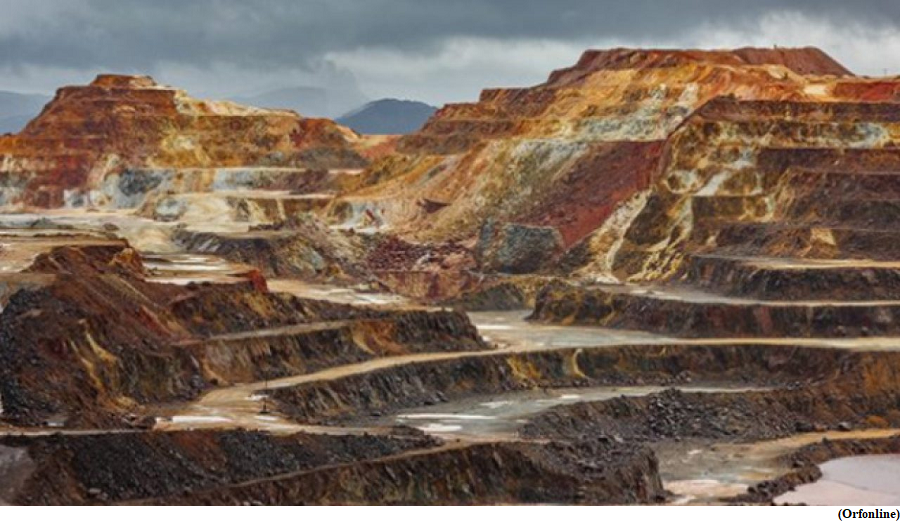Export controls and the green transition, Securing critical mineral supply chains (GS Paper 3, Economy)

Context:
- Countries across the globe have been identifying ways to secure critical minerals supply chains to facilitate a smooth green transition.
- Critical minerals (CMs) such as cobalt, graphite, and lithium, among others, are key inputs for green technologies, including electric vehicles (EVs).
- Thus, creating secure supply chains for these CMs is vital for a smooth green transition.
Geographical concentration:
- Critical minerals, however, remain highly geographically concentrated due to their natural occurrence in certain parts of the world.
- For example, the Democratic Republic of Congo has 46 percent of the world’s cobalt reserves, while Bolivia has the world’s highest lithium reserves with 23.6 percent.
- In addition to their availability, the production and refining processes of these minerals are also highly concentrated. Almost half of the world’s lithium is mined in Australia, whereas China refines more than 90 percent of the world’s graphite into materials used in EV batteries.
- This high geographical concentration of CMs exposes their supply chains to greater shocks and disruptions, including but not limited to, export controls and bans, among other factors.
Export restrictions by China:
- Most recently, China imposed export controls on graphite and has thus prohibited the export without license of “high-purity synthetic graphite and natural flake graphite, including spherical and expanded forms”, which will come into effect from 1 December 2023.
- This comes shortly after China imposed restrictions on the export of germanium and gallium in August 2023.
- In both these cases, the export restrictions affect two key areas; graphite is used in the manufacturing of EV batteries, and germanium and gallium are used for manufacturing semiconductor technologies.
- The export ban on graphite is likely to increase the prices of graphite globally since China is the top exporter of graphite, and is “expected to produce 61 percent of the global supply of natural flake graphite and 92 percent of the processed material used for battery anodes”.
Securing supply chains:
- While licenses and bans have been previously used to limit the export of critical minerals, these restrictions on critical raw materials have significantly increased since 2009.
- This, however, raises the broader question of how countries can create secure critical mineral supply chains, especially in light of high import dependencies coupled with the possibility of export bans and restrictions imposed by resource-rich countries or dominant supplier countries.
- Further, it is anticipated that the green transition will lead to an increase in demand for critical minerals that may result in supply shortages.
- Countries will, therefore, not only need to increase the supply of CMs, but also secure existing supply chains to meet future demand.
Policy interventions:
- In light of these risks, countries have sought to de-risk and secure the CM supply chains through various policy interventions, including friend-shoring policies, diversifying suppliers, and investing in domestic capacities.
- Businesses in the EV sector have increased their number of suppliers and even started investing in the CM supply chain. Earlier, in a bid to diversify its suppliers, Tesla signed a deal with Magnis Energy Technologies to secure the supply of graphite.
- Additionally, Tesla also confirmed that it is building a lithium refinery in the US. Similarly, General Motors is also investing in Lithium Americas to ensure lithium supply.
Bilateral partnerships:
- In addition to these interventions, bilateral partnerships are emerging as a key tool to create more resilient CM supply chains.
- While groupings such as the G20 and the G7 have reiterated the need to create secure CM supply chains, bilateral partnerships seek to deepen cooperation and investments in the CM sectors. These partnerships have been at the forefront of policy options implemented by some countries to secure CM supply chains.
- The partnerships allow countries to engage at different levels of commitments ranging from cooperation and coordination of policies to deeper environmental and labour standards commitments.
- These partnerships/agreements are also a means of diversifying existing supply chains and reducing over-reliance on existing suppliers.
CM Agreements:
- The US and Japan, for example, have entered into a CM Agreement that aims to strengthen and diversify critical mineral supply chains necessary for EV technologies.
- The Agreement reiterates the countries’ international trade obligations as applicable to CMs and also contains clauses for facilitating sustainable supply chains.
- Similarly, the India-Australia Critical Minerals Investment Partnership seeks to deepen bilateral cooperation in the area of CMs between the two countries. Recently, France and Australia, too, signed a bilateral agreement on critical minerals.
- Negotiations are also underway for critical minerals agreements between the US and the European Union (EU), and the US and United Kingdom (UK).
Dual objective:
- In addition to investment cooperation and removal of tariff barriers, some of these agreements reiterate countries’ commitments to not impose import or export restrictions.
- Further, in addition to market access and trade measures clauses, these agreements can also seek to promote the creation of sustainable supply chains for CMs by including mutually agreed commitments regarding trade-related environmental standards in supply chains.
- This fulfils the dual objective of securing CM supply chains and while also making the supply of CMs sustainable and equitable.
Way Forward:
- Despite critical minerals supply chains being highly concentrated, bilateral cooperation can help address some of the associated challenges.
- Thus, while policy coordination at the multilateral level, as well as domestic policy interventions and de-risking by businesses, remain important, countries are increasingly turning to bilateral partnerships to cooperate in the domain of critical minerals and address possible vulnerabilities in the supply chain, especially those concerning tariff barriers and export restrictions.
- These partnerships can thus move countries a step closer towards addressing the challenges posed by supply shocks and restrictions, and help build collaborative pathways for securing critical mineral supply chains to enable a smooth energy transition.


